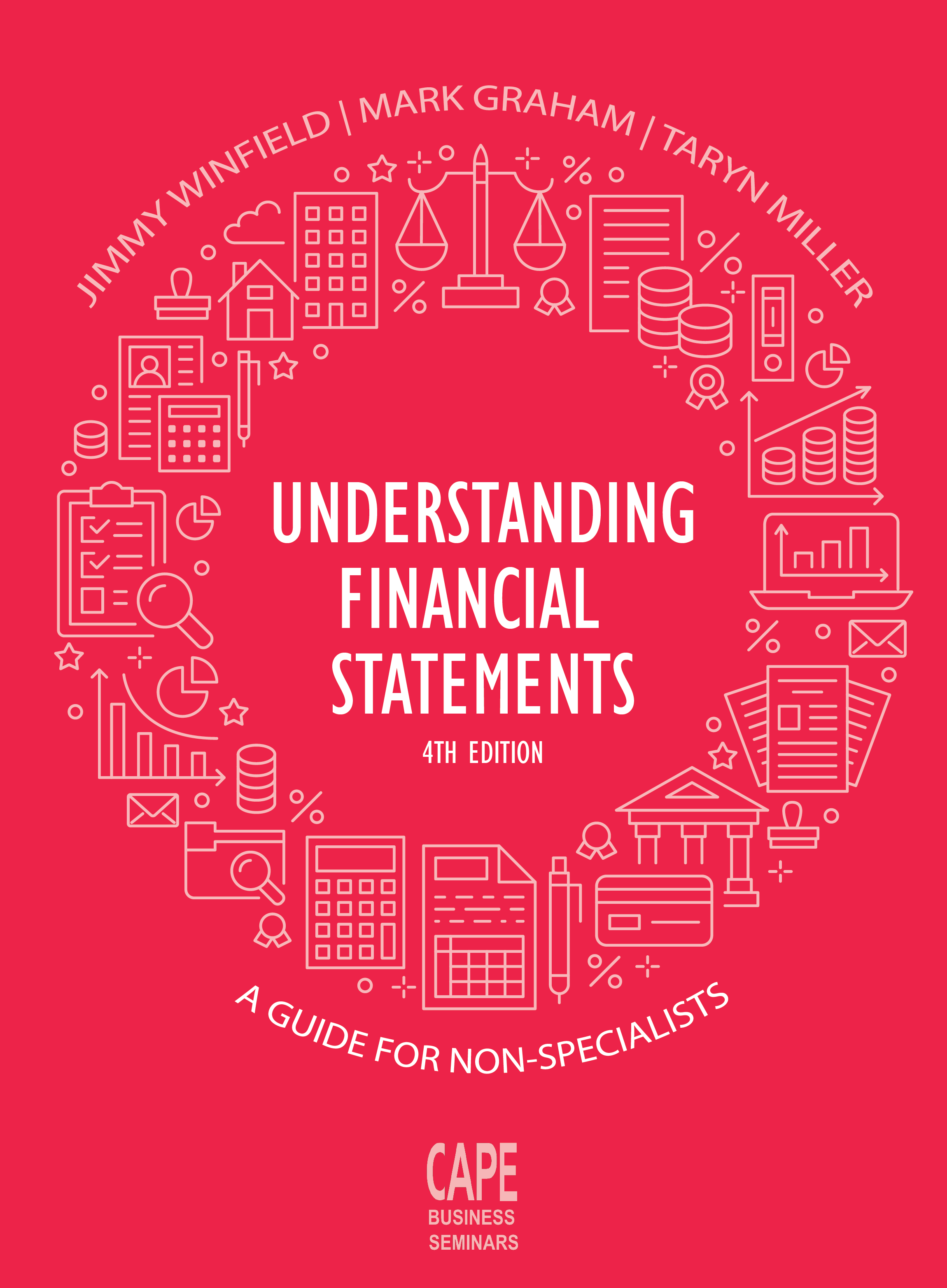


A GUIDE FOR NON-SPECIALISTS
By Winfield, Graham & Miller
4th ed.

The go-to book for undergrad and postgrad courses aiming to empower people to read financial statements, and speak the language of accounting. The first three editions have sold well more than 10,000 copies, and have been prescribed at UCT, GIBS, Wits, UKZN, Rhodes, UWC, Varsity College, Vega, and many others. This fourth edition is fully up to date, loaded with real-world examples, and comes with a full inventory of lecturer resources. It is available in both hard copy and ebook formats.
The main objective of Understanding Financial Statements, and any course which uses this book, is to help students of business understand and use financial statements to ultimately make better business decisions. It helps non-specialist students understand accounting terminology, and to decode the meaning of IFRS-based financials. It does this without delving deeply into complex mechanics – the debits and credits – but rather focusses on the content of the statements themselves. For example, non-specialists need not understand the manifold ways in which trading stock might affect the journal, ledger and trial balances; rather, they need an appreciation of what inventory and trade payables balances say about the business’s working capital, and how profitability is impacted by cost of sales.
Although Understanding Financial Statements is not specifically aimed at students who are studying to become accountants, these students may benefit from the big-picture understanding that it provides, so the book can also be used as a high-level introduction to IFRS before diving into the complexities of each standard.
Understanding Financial Statements has been written to aid the teaching of a wide range of students doing business studies. It can be used at a diploma, undergraduate or postgraduate level, as well as within an executive education programme.
| Background to financial accounting | Chapter 1 | Financial Accounting in Context. The landscape of accounting; key characteristics of businesses; how businesses create value; the purpose of the financial statements. |
| Chapter 2 | Accounting Basics. A simplified overview of the mechanics of the accounting system and how it produces the financial statements, using fourteen typical transactions. | |
| Chapter 3 | Financial Reporting Standards. A brief history of accounting standards; an overview of IFRS, including critiques and responses, and IFRS for SMEs. | |
| The content of financial statements | Chapter 4 | Income and Expenses. All the key items that appear on a statement of comprehensive income, including revenue, operating and finance expenses, profit, EPS. |
| Chapter 5 | Cash Flows. The differences between profit and cash flows; quality of earnings; direct and indirect statements of cash flows; working capital management. | |
| Chapter 6 | Assets. The asset definition and recognition criteria; depreciation, amortisation and impairment; PPE, investment properties, intangibles, inventory, and financial assets. | |
| Chapter 7 | Liabilities. The liability definition and recognition criteria; commitments; contingent liabilities; deferred income, accruals, grants, provisions, and financial liabilities. | |
| Chapter 8 | Leases, Foreign Exchange & Deferred Tax. Lease accounting by a lessee; lease accounting by a lessor; foreign transactions; foreign operations; deferred tax. | |
| Chapter 9 | Group Financial Statements. Groups of companies; consolidation of subsidiaries; non-controlling interests; goodwill; equity accounting of associates and joint ventures. | |
| Chapter 10 | Equity. The statement of changes in equity; transactions between businesses and their owners; reserves; changes in accounting policy and material errors. | |
| Using financial statements | Chapter 11 | Financial Analysis. Risk-return profiles; benchmarks; understanding the story of the financial statements; Du Pont and other ratio analysis; financial analysis challenges. |
| Chapter 12 | Business Valuations. Book value, market value, and intrinsic value; discounted cash flow valuation models; valuation multiples methods. | |
| Broader issues | Chapter 13 | Creative Accounting. Reasons businesses prepare misleading information; common ways in which financial statements have been manipulated; countermeasures. |
| Chapter 14 | Trends in Corporate Reporting. Developments in IFRS; XBRL and iXBRL; blockchain; environmental, social and governance reporting; integrated reporting. |
To obtain an instructor's copy of the book, or if you simply have questions about it, we'd love to hear from you! Please email info@understandingfinancialstatements.com.